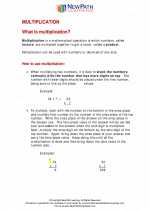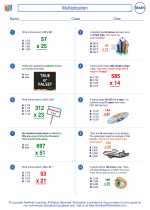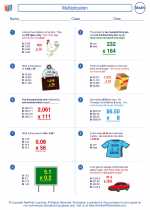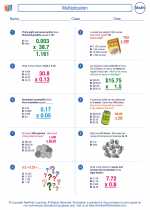Linear Equations
A linear equation is an algebraic equation in which each term is either a constant or the product of a constant and the first power of a variable. The general form of a linear equation in one variable is:
ax + b = 0
Where a and b are constants, and x is the variable. Linear equations can also be written in the form y = mx + b, where m is the slope and b is the y-intercept. In this form, the equation represents a straight line on a graph.
Solving Linear Equations
To solve a linear equation, you can use several methods, such as:
- Substitution: Substitute one expression from the equation into the other, and solve for the variable.
- Elimination: Add or subtract the equations to eliminate one variable, and then solve for the remaining variable.
- Graphing: Plot the equations on a graph and find the point of intersection.
Study Guide
When studying linear equations, it's important to understand the following key concepts:
- Slope-Intercept Form: Understand how to represent a linear equation in the form y = mx + b, where m is the slope and b is the y-intercept.
- Graphing: Practice graphing linear equations on the coordinate plane and understanding the relationship between the equation and its graphical representation.
- Solving Equations: Learn and practice different methods for solving linear equations, including substitution, elimination, and graphing.
- Applications: Understand real-world applications of linear equations, such as calculating costs, determining rates of change, and predicting trends.
By mastering these concepts and practicing solving various linear equations, you can develop a strong understanding of this fundamental algebraic topic.
[Linear Equations] Related Worksheets and Study Guides:
.◂Math Worksheets and Study Guides Sixth Grade. Multiplication
Study Guide Multiplication
Multiplication  Worksheet/Answer key
Worksheet/Answer key Multiplication
Multiplication  Worksheet/Answer key
Worksheet/Answer key Multiplication
Multiplication  Worksheet/Answer key
Worksheet/Answer key Multiplication
Multiplication 

 Worksheet/Answer key
Worksheet/Answer key
 Worksheet/Answer key
Worksheet/Answer key
 Worksheet/Answer key
Worksheet/Answer key

The resources above cover the following skills:
The Number System
Compute fluently with multi-digit numbers and find common factors and multiples.
Fluently multiply and divide multi-digit whole numbers using the standard algorithm. Express the remainder as a whole number, decimal, or simplified fraction; explain or justify your choice based on the context of the problem.